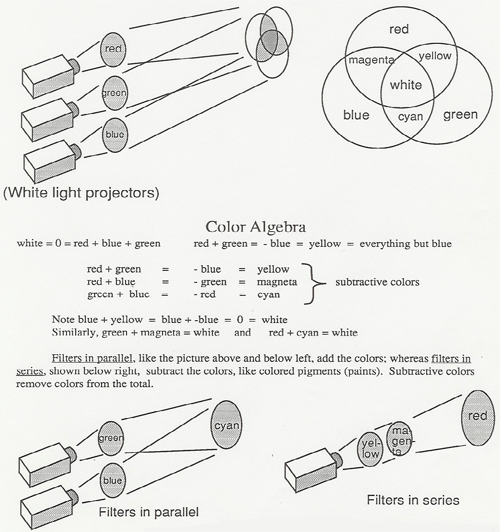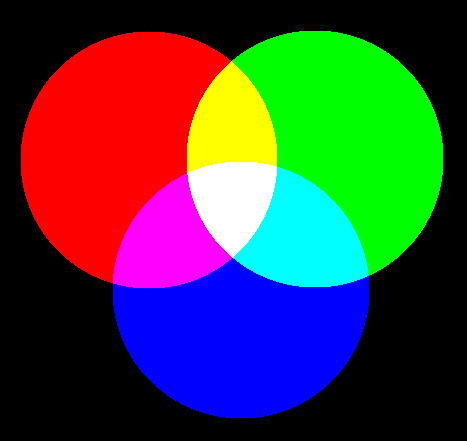0.1.11 Projected Colors

A set of color filters can be projected in a triangular overlapping circle pattern. Filters available are red, blue, green, and minus red, minus blue, and minus green.
The Rav'n light is a small pulsing light that looks white. When swung around on a string you can see that it is made up of only red, green, and blue pulses.There is a new set of red, green and blue leds which can be projected into overlapping circles. The intensity of each light can be adjusted to some extent to make any color in the overlapping region. An amber led is also available and can be compared to a mixture of red and green. This can be used to discuss how the eyes see color. Why for instance, do red and green light, with no wavelengths in the yellow spectral region, give the sensation of yellow? The answers can be found in the sensitivity of the three types of cones in the eye. Sample led spectra, cone sensitivity, and the CIE diagram are below. The CIE diagram can be used to describe the gamut of any display device. For more info go here.

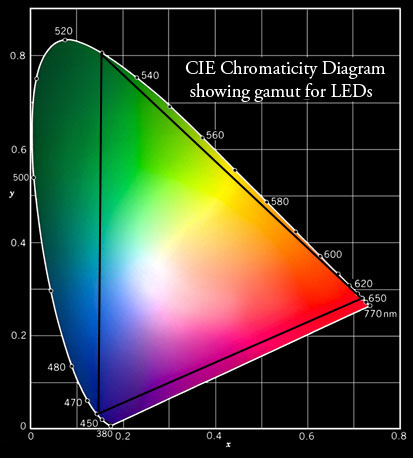
Also available are hand-held color mixers. One device has a tricolor red, blue and green LED with three switches. By pressing two of the three switches, the secondary or negative colors are made and by pressing all three at the same time we get white light.
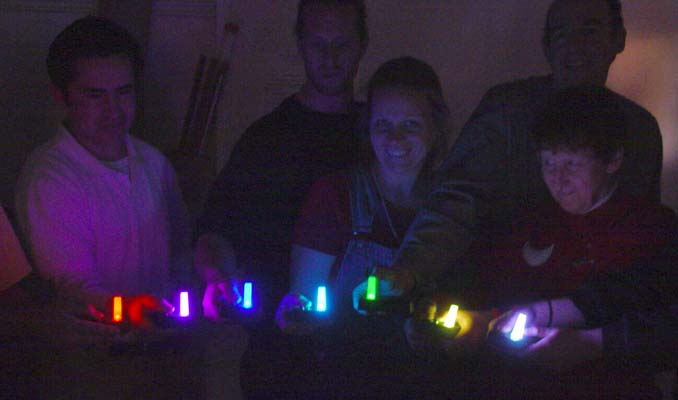
Participants at a workshop show the seven possible colors after making this little color mixer with a tricolor led. This is similar to controlling a single pixel of a 3 bit RGB display. Black is the eigth color.
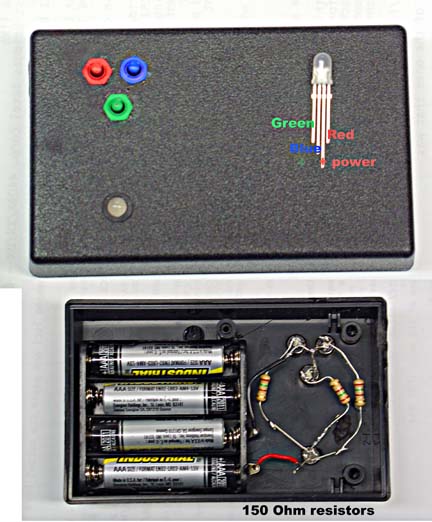

The tri color led can be found here.
Color Algebra
